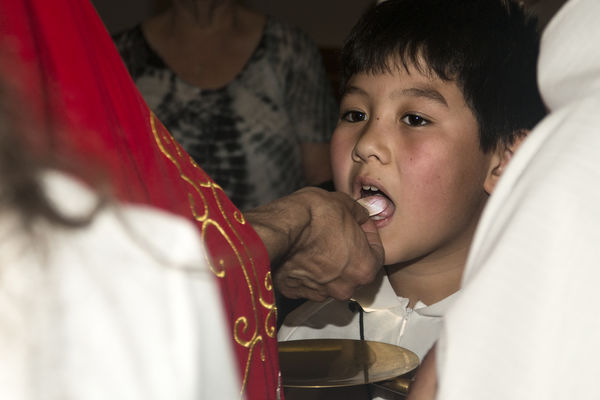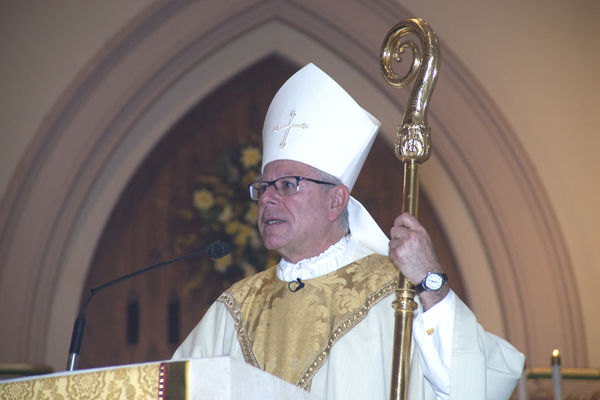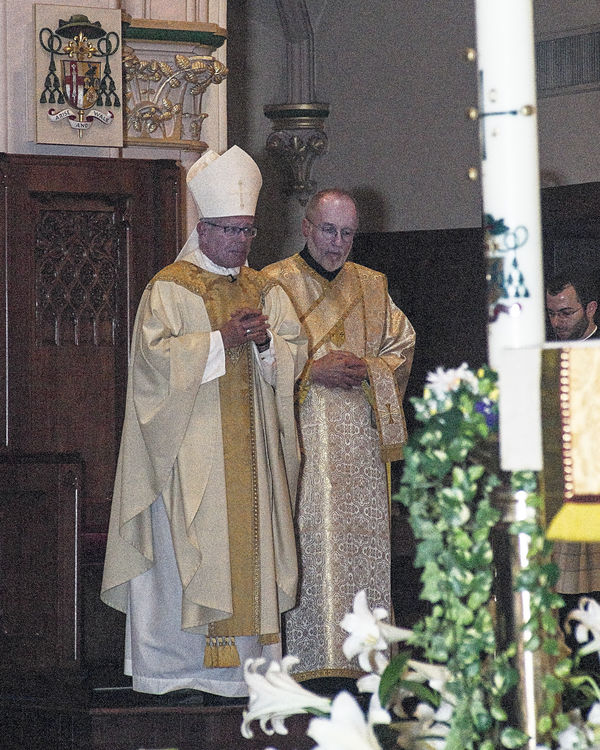Photography in a Church with or without flash
Apr 29, 2018 13:51:45 #
toptrainer wrote:
What would be the best settings in a church for the camera if you were not using flash and if you were using flash? I have a canon 80 D and a Canon 6D. It seems like every time I try with or without a flash I still get grain. This happens when I am shooting the whole group of kids, when I do one at a time comes out great. By the way I was shooting a first communion.
Hi Toptrainer, Shooting in low light requires a lens that is at least F2.8, especially where there is motion. This will let in more light and you will be able to up the shutter speed to eliminate motion smear... Flash does not light up the whole space, only lights up the subject, & its light is added to the ambient light ( existing light) via E-TTL!
When I am shooting in low light I open my aperture fully, setting my shutter to around 1/60th, ISO at least 800% or more.... I shoot Manual so that I can adjust speed and aperture, exposure compensation, on the fly, since communion shots have lots of white garments that reflect light more..... If you have LightRoom it can reduce the grain (noise) substantially, as well as getting rid of the amber color cast, ( White balance control). Im sure that you can use flash, after the ceremony for the formal shots... No problem with the procession.... The Mass no way....
As to group shots.. Usually taken after the ceremony.. You need to be careful about getting all of the rows in focus , which means you will have to close down your aperture to F7.1 or more.. you will be able to use your flash setting it to 1/60th, and tweak up or down your ISO..
* HINT! make sure the subjects are as far from the backgrounds ( walls) as possible to eliminate shadows on the wall....If the ceilings are low enough (up to 10 feet) use a bounce flash to lower the shadow...
Apr 29, 2018 14:13:16 #
My goodness! More church "horror stories"! In 50 years of operating in houses of worship, I have NEVER experienced altercations with amateur photographers, guests, the clergy or anyone else. I have never "kicked anyone out" or have been kicked out! Most guests and participants are polite, courteous and understanding folks. Where do some of you folks live?
When you go to church to participate in a special occasion, why not concentrate on the celebrations, the prayers and good tidings- not the photographer. If there is a professional photographer there, just let him or her do their work- they are accountable to the folks that hired them and the need to deliver their product unencumbered by others. If they get into scraps with members of the congregation, they ain't really "professional"!
A seasoned pro can move about in a fairly stealth manner. What's really distracting are pews full of folks welding cell phones and cameras instead of getting with the program.
When you go to church to participate in a special occasion, why not concentrate on the celebrations, the prayers and good tidings- not the photographer. If there is a professional photographer there, just let him or her do their work- they are accountable to the folks that hired them and the need to deliver their product unencumbered by others. If they get into scraps with members of the congregation, they ain't really "professional"!
A seasoned pro can move about in a fairly stealth manner. What's really distracting are pews full of folks welding cell phones and cameras instead of getting with the program.
Apr 29, 2018 15:01:19 #
toptrainer wrote:
What would be the best settings in a church for the camera if you were not using flash and if you were using flash? I have a canon 80 D and a Canon 6D. It seems like every time I try with or without a flash I still get grain. This happens when I am shooting the whole group of kids, when I do one at a time comes out great. By the way I was shooting a first communion.
Well, there are books written on this subject, but I will try and keep this concise and appropriate to your photography. Your studio posed shots are pretty good, as are most of your images where you are shooting in good light.
Yes, your low light images could use some help. You should minimize your use of the 80D in dark venues. While 3200 ISO is no problem for the 6D, it will be for the 80D.
If you need to use flash, bounce it whenever possible, or at the very least use a Rogue Flashbender or Better Bounce Card - the largest they make, and get in as close as possible to your subjects. when you have shots in front of the church which show the inside of the church, it's ok to adjust your flash for lower output and/or drag the shutter (use a slower shutter speed to allow more ambient light into the composition.
Off camera flash almost always looks better and more interesting (and professional) than on or near camera flash (like a flash bracket). Bouncing the flash, if the situation allows, will provide the most flattering light.
Watch your ISO. Shoot raw and adjust your noise and sharpening balance in post processing, before you convert to jpeg. Watch out for color - low level incandescent light is orange if you shoot with a flash and the camera is close to daylight or flash white balance. In those situations I use anywhere from a 3/4 CTO to as much as 1+1/4 CTO gel on the flash.
Depending on the venue if the ambient light is somewhat consistent, you might be able to get away using a dual-illuminant camera profile made with a ColorChecker Passport. You make a balanced profile for your flash - you only have to do that once, unless you notice different color at different power settings, then you make one for each. For the ambient light, you can make however many you need to cover the conditions. When you go to use the profile, use the CCP's software to create a dual illuminant profile which will resolve the two different colored light sources. I've used it and it does a decent job, and is a lot faster than fixing it in post processing.
These two guys really know their lighting which you can tell from their images, and it pays to look at their work and deconstruct what they have done.
https://neilvn.com/tangents/wedding-photography-tutorials/
https://neilvn.com/tangents/flash-photography-techniques/
https://neilvn.com/tangents/category/posing/
http://www.duenkel.com/
https://photosuccess.com/2016/08/03/lighting-techniques-with-fuzzy-duenkel/
The first guy's work can lean a bit more towards fashion style, the second just looks incredibly natural - both understand facial structure, light and shadow, posing, and mixing ambient and flash - it helps to compare your own work to someone who clearly has mastered the aspects of their work that you can aspire to.
Apr 29, 2018 15:31:59 #
toptrainer wrote:
1/60, F11, ISO 8000, (I believe I left ISO on aut... (show quote)
A lot of people like auto ISO - I never use it. This image is about 2 stops underexposed for the children's faces. You have a choice - at 28mm you should be able, with stabilization turned on, to get a crisp shot at 1/30 sec. so you'd be halfway there. Using an aperture 5.6 gets you two stops. Meaning you can use ISO 3200 or 4000. You'd have a better exposure, and there would be a lot less noise - if you look at the brighter details in the area above the altar, there is no noise at all at 8000 ISO. It's hard to tell, but I think your focus point may have been on the wall, and not the kid dead center of the group with the gray suit. Using 28 mm focal length and F5.6, and focused at 10 ft, your depth of field extends from 6 ft to 29 ft. A slightly wider view of 26mm would give you a depth of field from 5.7ft to 35.7 ft. So clearly, you needed to focus in the group.
That's how I might have handled it - with a little chimping to check focus and for camera motion blur.
I noticed that some of the subjects weren't looking at you. A trick I use is to tell everyone that they should close their eyes. I will count to three, then they need to open their eyes on three. It almost never fails - all the eyes will be open and looking at you, and there will be some very natural expressions on the faces.
I would not use an aperture any larger than F5.6 for a shot like this.
Apr 29, 2018 15:48:32 #
rehess wrote:
OP used the words 'First Communion'; those words usually go with 'worship service', which conventionally goes with the words 'no flash'.
This shot was obviously either before or after the Sacrament has been administered/received. You'd have to have been raised Roman Catholic to know that. It is obviously up to the pastor or priest officiating. My experience it is always better to ask than to end up begging for forgiveness, even though if you need forgiveness you'd have a hard time finding a better place to get it. But I agree, that during the mass and the receiving of the First Communion, flash would most likely be verboten.
Apr 29, 2018 16:43:26 #
Gene51 wrote:
This shot was obviously either before or after the Sacrament has been administered/received. You'd have to have been raised Roman Catholic to know that. It is obviously up to the pastor or priest officiating. My experience it is always better to ask than to end up begging for forgiveness, even though if you need forgiveness you'd have a hard time finding a better place to get it. But I agree, that during the mass and the receiving of the First Communion, flash would most likely be verboten.
First, I agree: always ask.
When I shoot a first communion, I ask the celebrant if he can hold with the Host just at the recipient's mouth until he sees the flash. If asks me not to take such a shot, I won't, but so far I've never been told I can't do that. The first attached file shows this.
Also, I've never been told I couldn't use flash when shooting in a large church/cathedral. The second and third attachments were done in the Cathedral of he Diocese of Manchester, NH with the permission of the presiding bishop. Because the building was so large, I had to set the ISO to 800 eve though I was using flash. Some grain/noise is apparent.
I'd expect more objection to using flash in a smaller church setting.
Also, It's been my experience that people, clergy included, object more to the "click" of the camera shutter than the actual light flash. That's why I use a Sony A7rII with its silent shutter mode.



Apr 29, 2018 20:10:53 #
coolhoosier wrote:
First, I agree: always ask. br br When I shoot a... (show quote)
Just an additional thought: During the ceremony, don't EVER take a shot that you haven't cleared ahead of time with the presiding clergy.
Apr 29, 2018 20:39:18 #
Besperus
Loc: Oregon
My experiences are based on wedding and performance photography. Digital work is more flexible than film. You ISO can increase to compensate for lighting variables. With film you could push ASA some extend processing. I was limited to no flash almost always. I don’t know either camera but the choice should provide you with options to create images using the lowest ISO widest aperture and fastest shutter to capture what ever light you do have in combination to produce as little noise as possible. Testing, as mentioned, a good hand held meter along with experience should improve images and provide experience to develop new skills to solve future issues you will face.
Apr 29, 2018 20:50:52 #
Besperus
Loc: Oregon
Of course, camera needs to be on a sturdy tripod. Another possibility is to shoot individual images “staged” with a flash or two. Group images, at a minimum of f8.
Shoot during the ceremony as without violating any church policies quietly and carefully, high ISO.
Shoot during the ceremony as without violating any church policies quietly and carefully, high ISO.
Apr 29, 2018 21:14:34 #
coolhoosier wrote:
Just an additional thought: During the ceremony, don't EVER take a shot that you haven't cleared ahead of time with the presiding clergy.
👍👍👍
Apr 29, 2018 21:17:41 #
BebuLamar wrote:
And I believe most churches will not want you to use a flash, especially if they are old and historic.I believe most churches allow you to walk in there when there is no mass and take some pictures. So you should go in there and figure out the light level in the church so that you or other can help you decide whether the lighting is sufficient.
Apr 30, 2018 07:05:07 #
toptrainer wrote:
What would be the best settings in a church for the camera if you were not using flash and if you were using flash? I have a canon 80 D and a Canon 6D. It seems like every time I try with or without a flash I still get grain. This happens when I am shooting the whole group of kids, when I do one at a time comes out great. By the way I was shooting a first communion.
set your aperture first and then adjust the rest of triangle to fit . most churches are pretty well lit but you have to work with available light. with flash bounce with full blast because of the height of most ceilings. grain is usually there because of the iso being too high. lower iso and slower shutter might help ( IE tripod or use some type of support ( the pews work well)
Apr 30, 2018 07:06:59 #
Besperus wrote:
Of course, camera needs to be on a sturdy tripod. Another possibility is to shoot individual images “staged” with a flash or two. Group images, at a minimum of f8.
Shoot during the ceremony as without violating any church policies quietly and carefully, high ISO.
Shoot during the ceremony as without violating any church policies quietly and carefully, high ISO.
that should also work. best if you go in ahead of the service and practice from different angles
Apr 30, 2018 07:09:16 #
coolhoosier wrote:
First, I agree: always ask. br br When I shoot a... (show quote)
Good advice and by asking you wont have to go to confession and get forgiveness later especially with a Bishop.
Apr 30, 2018 07:13:56 #
Gene51 wrote:
A lot of people like auto ISO - I never use it. Th... (show quote)
Those are good words of advice. try to always focus on center subject and let camera adjust for the shot ( focus) then shoot Try shooting a couple of shots at a time in case of eyes and or hand/mouth motion
If you want to reply, then register here. Registration is free and your account is created instantly, so you can post right away.





